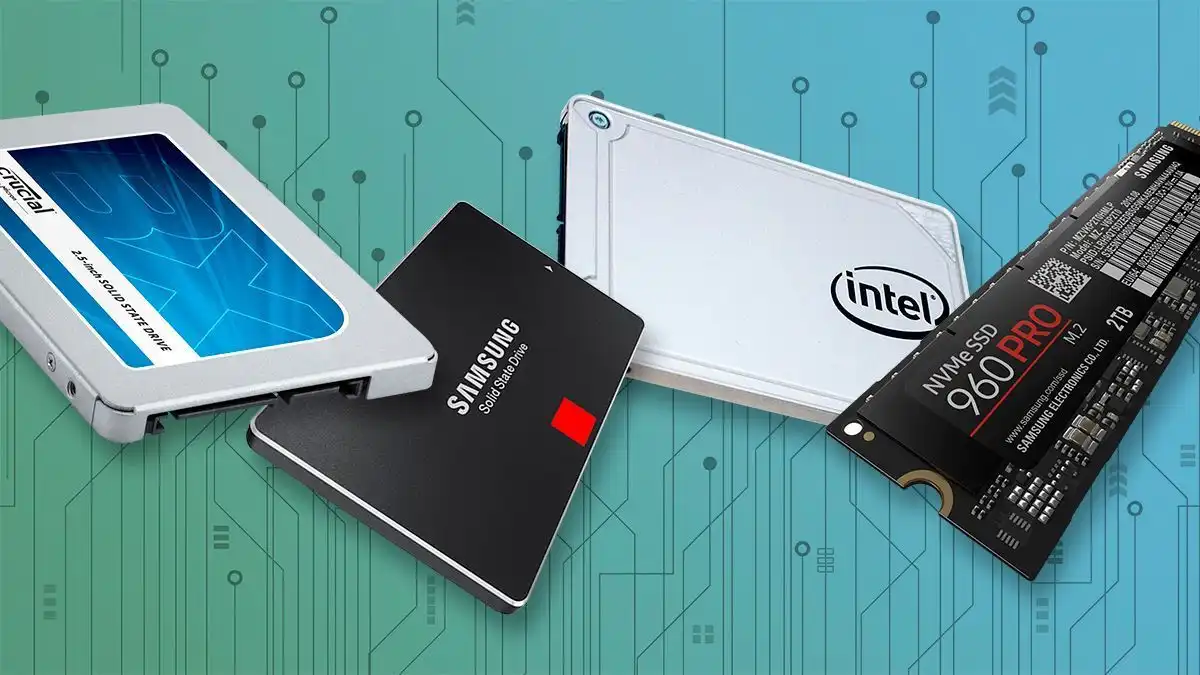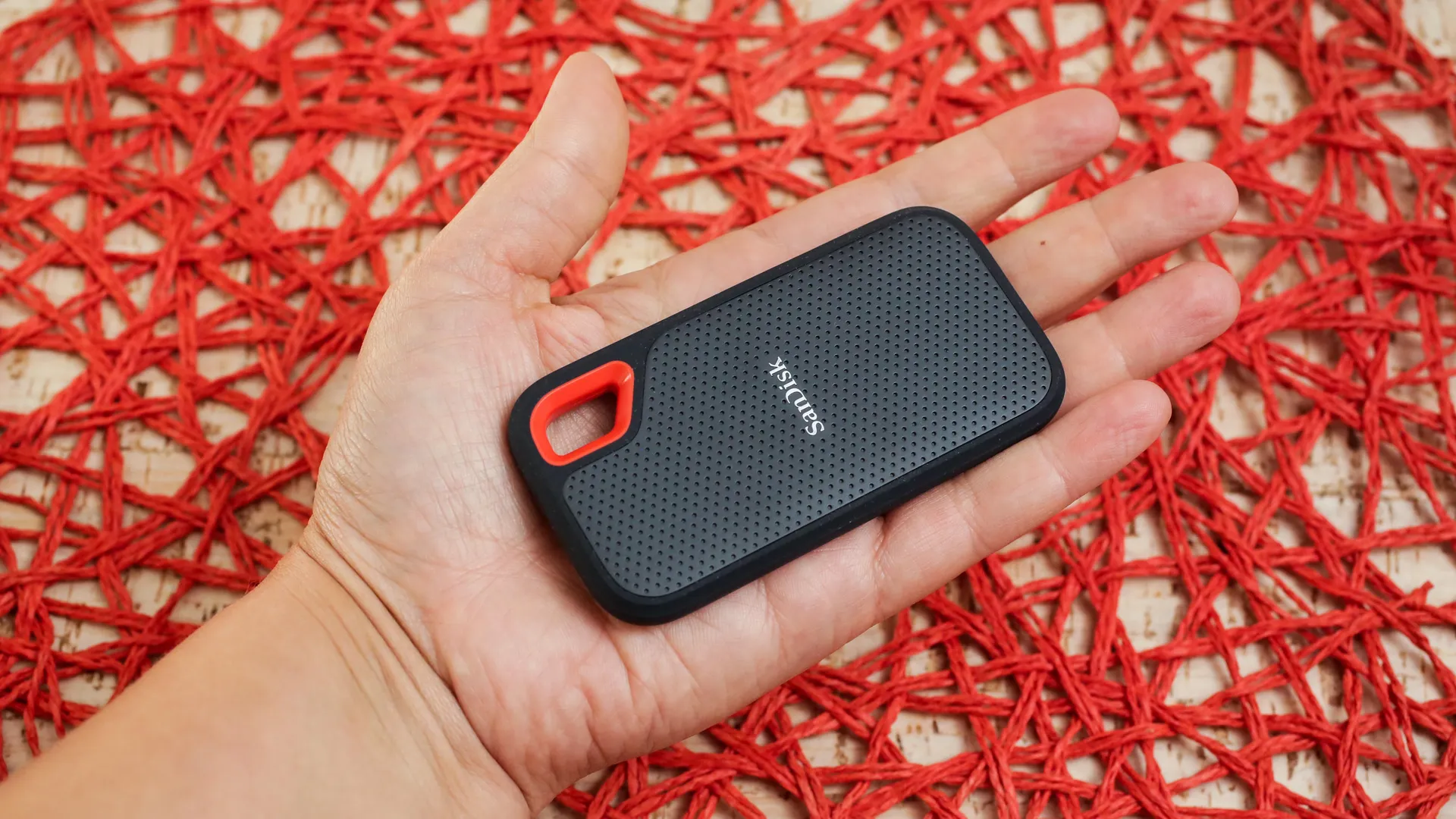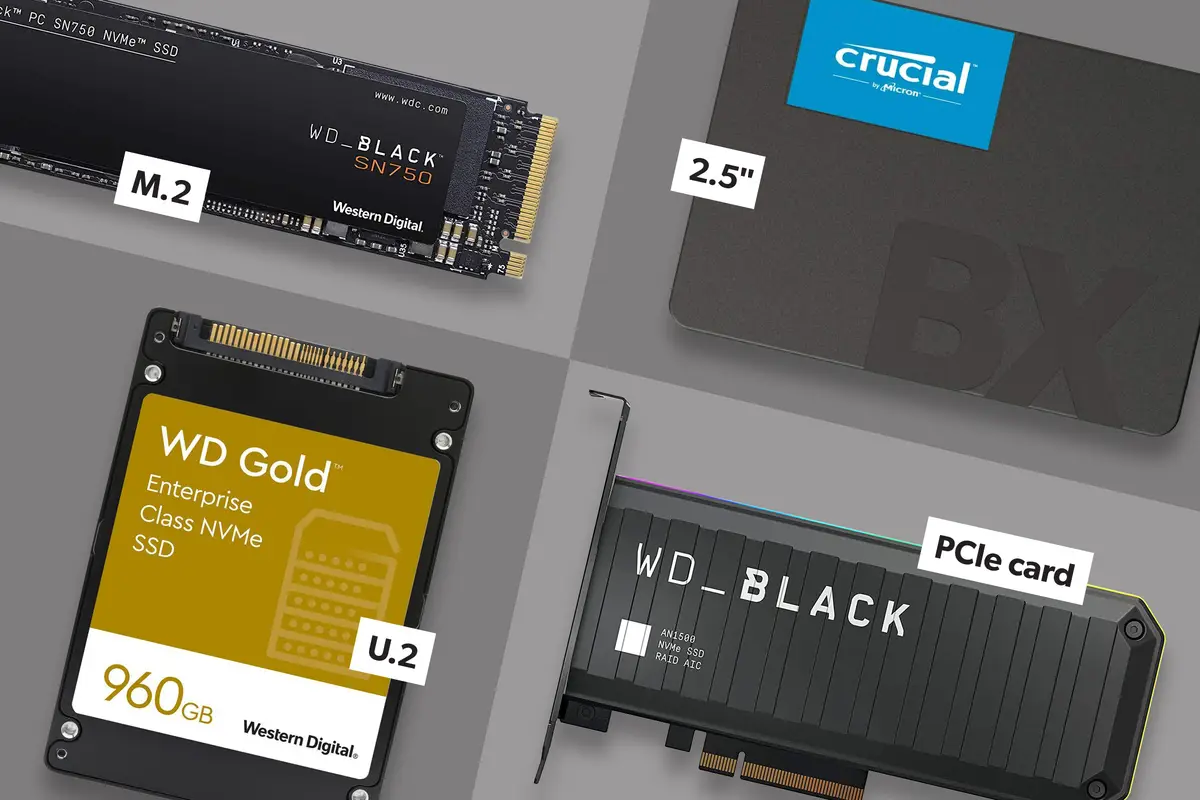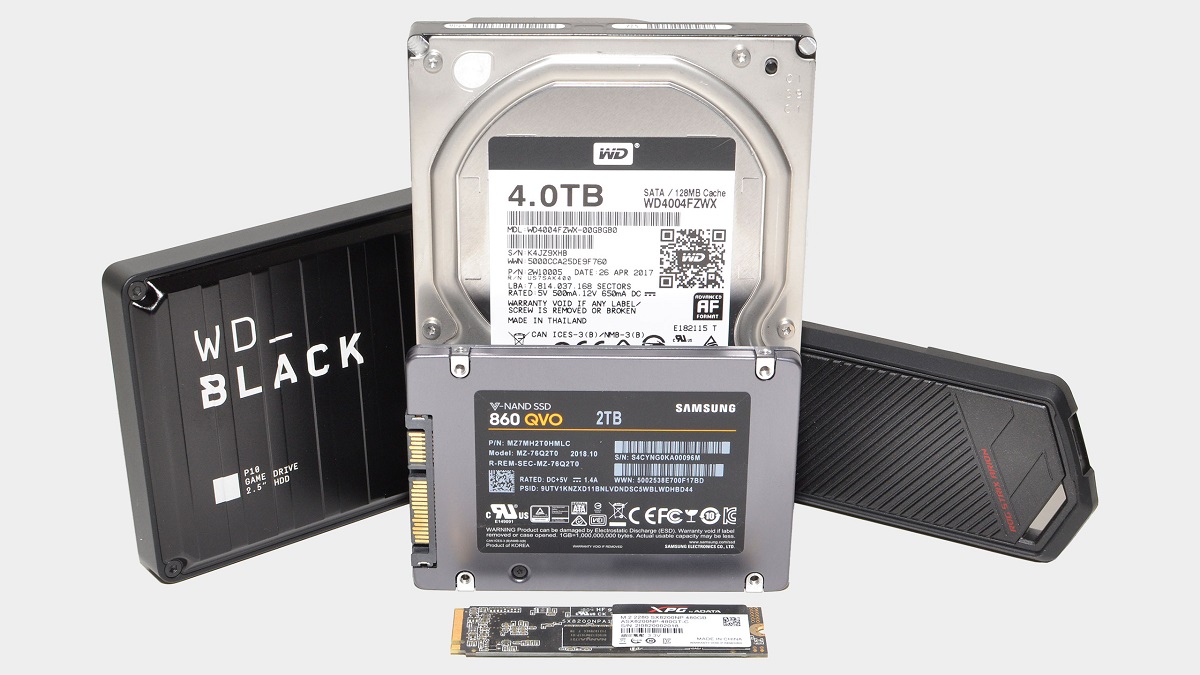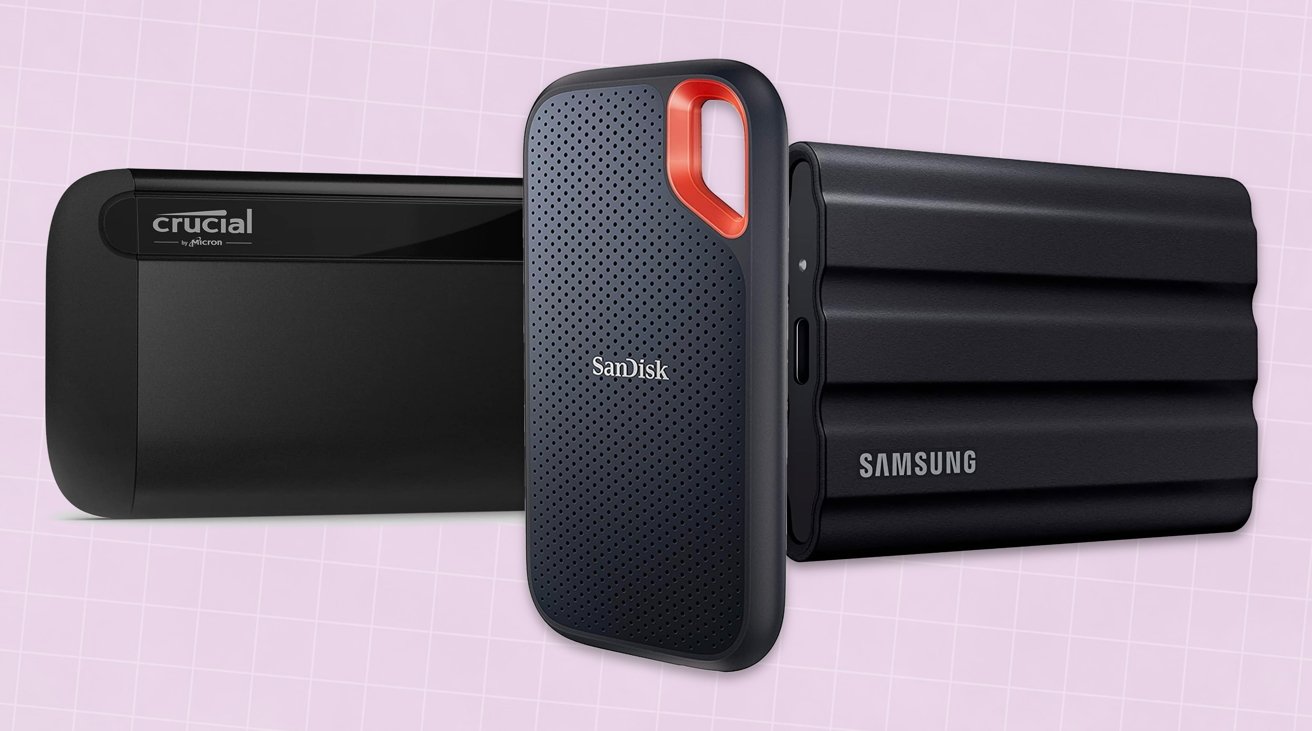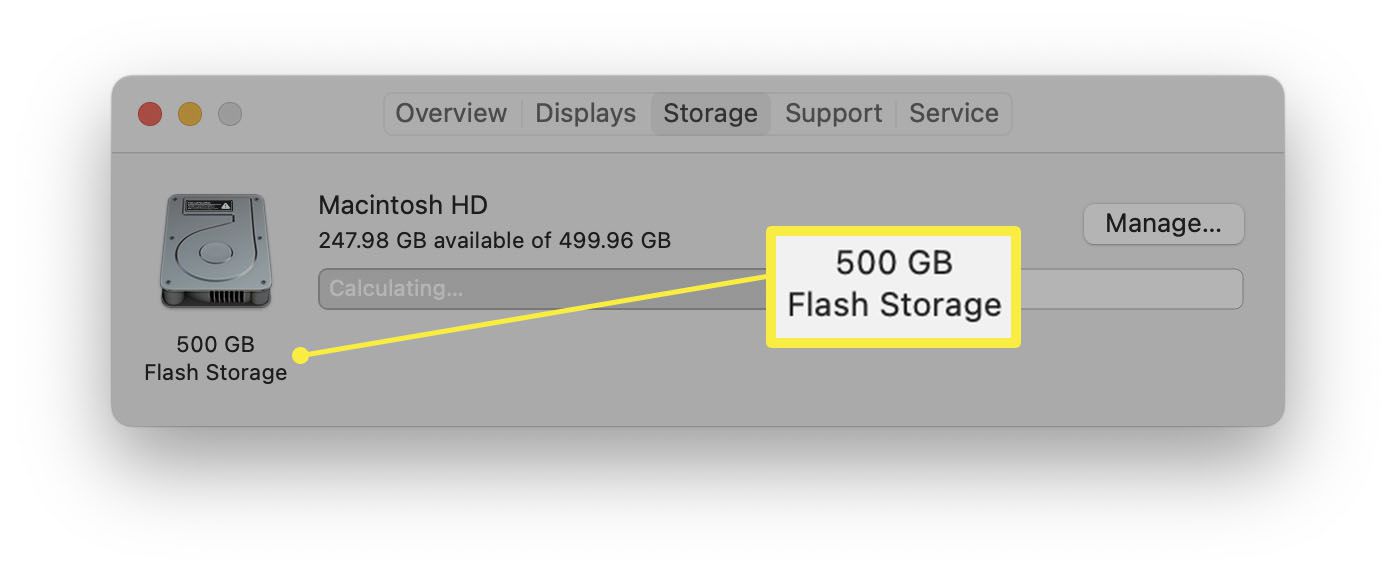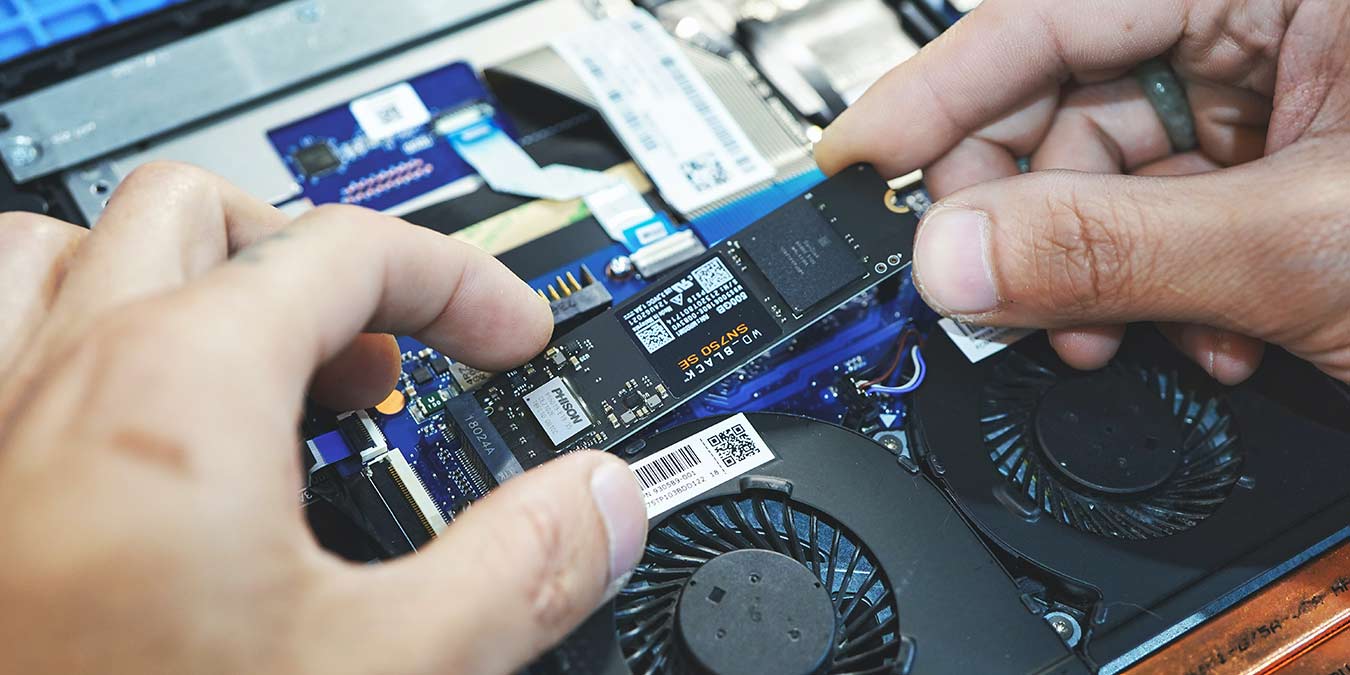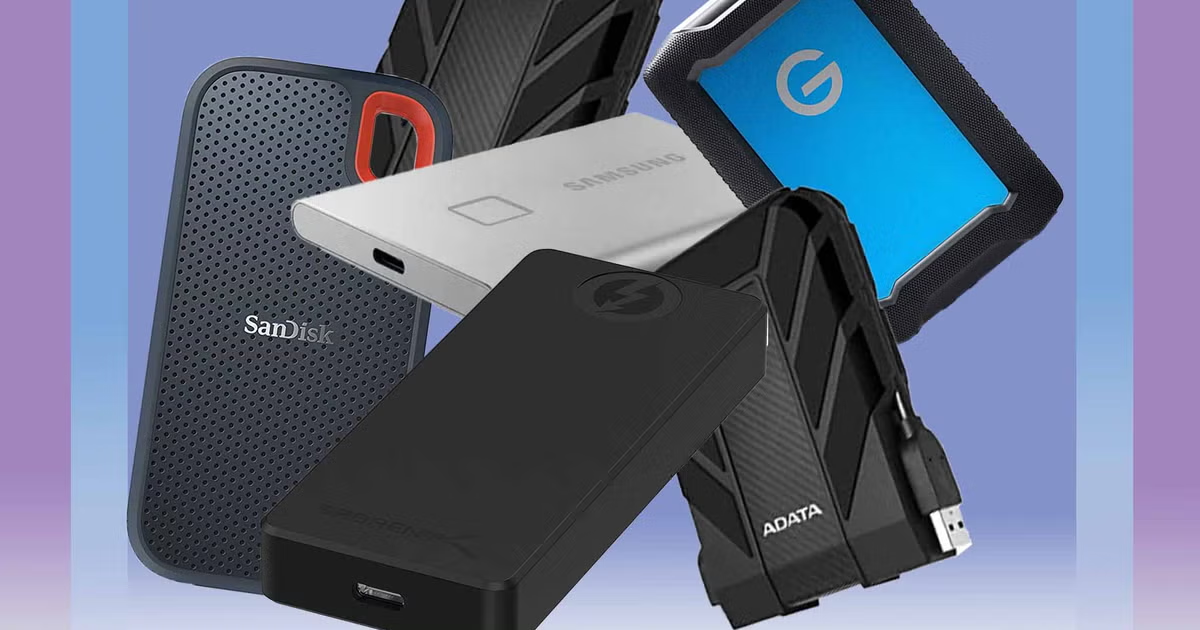Introduction
Welcome to the world of Solid State Drives (SSDs), where speed, performance, and reliability are at the forefront of modern storage technology. If you’re considering upgrading your computer’s storage system, you are likely wondering which type of SSD is the best fit for your needs. In this article, we will explore the different types of SSDs available and help you understand the key factors to consider when making your decision.
Gone are the days when traditional hard disk drives (HDDs) ruled the market with their spinning platters and mechanical read/write heads. SSDs, which utilize flash memory chips to store data, have taken center stage in recent years due to their significant advantages over HDDs. These advantages include faster boot times, quicker application load times, and improved overall system responsiveness.
When it comes to choosing an SSD, you will encounter two main categories: SATA SSDs and NVMe SSDs. SATA, short for Serial ATA, has been the traditional interface for connecting storage devices, while NVMe, or Non-Volatile Memory Express, represents the latest and fastest storage protocol.
Both SATA and NVMe SSDs have their own unique features and benefits, so it’s important to understand their differences before making a decision. In this article, we’ll explore the basic characteristics of each type of SSD, their performance capabilities, capacity options, endurance ratings, and price considerations. Additionally, we’ll discuss compatibility factors to ensure that you choose an SSD that is compatible with your system.
Ultimately, the right SSD for you will depend on your specific needs and budget. By the end of this article, you’ll have a solid understanding of the different types of SSDs available, enabling you to make an informed decision and take advantage of the numerous benefits that SSDs have to offer.
SSD Basics
Before we dive into the specifics of different SSD types, let’s start with the basics. At their core, SSDs are storage devices that store data using solid state flash memory rather than the spinning disks and moving parts found in traditional hard disk drives (HDDs). This fundamental difference in technology results in several significant advantages for SSDs.
One of the key benefits of SSDs is their impressive speed and performance. Unlike HDDs, which rely on physical movement to read and write data, SSDs provide near-instantaneous access to stored information. This means faster boot times, quicker file transfers, and snappier application load times. The difference in speed is particularly noticeable when it comes to random access to data, making SSDs ideal for tasks that involve accessing multiple files simultaneously.
Another advantage of SSDs is their durability. Unlike HDDs, which can be easily damaged by shock, drops, or vibrations, SSDs have no moving parts and are more resistant to physical damage. This makes them ideal for use in portable devices such as laptops or external drives, where durability is crucial.
Furthermore, SSDs consume significantly less power than HDDs. This not only leads to longer battery life for laptops and other portable devices but also contributes to a cooler and quieter computing experience. In addition, SSDs generate less heat, which can help prolong the lifespan of your system and reduce the risk of overheating.
In terms of form factor, SSDs are typically smaller and more compact than HDDs. This makes them a perfect fit for slim laptops, sleek ultrabooks, and other devices where space is limited. Additionally, the lack of moving parts in SSDs results in a noiseless operation, eliminating the annoying sounds associated with spinning HDDs.
Now that we have covered the basics of SSDs and their advantages, it’s time to delve deeper into the different types of SSDs available in the market, starting with SATA SSDs.
SATA SSD
SATA (Serial ATA) SSDs are the more traditional and widely used type of SSDs. They utilize the SATA interface to connect to the computer’s motherboard. SATA SSDs are popular due to their compatibility with a wide range of devices, including laptops, desktops, and gaming consoles.
When it comes to performance, SATA SSDs offer significant speed improvements over HDDs while still providing a noticeable boost in overall system performance. With read and write speeds typically ranging from 500MB/s to 600MB/s, SATA SSDs can significantly reduce boot times and enhance multitasking capabilities.
One of the advantages of SATA SSDs is their affordability. Compared to other types of SSDs, SATA SSDs tend to be more budget-friendly while still delivering a substantial improvement in performance compared to HDDs. This makes them an attractive option for users looking to upgrade their storage without breaking the bank.
SATA SSDs also offer a wide range of storage capacity options, starting from 120GB and going up to several terabytes. This allows users to choose the storage capacity that best matches their needs, whether it’s for basic computing tasks, gaming, or professional content creation.
Another advantage of SATA SSDs is their broad compatibility with existing systems. Since SATA has been the standard interface for connecting storage devices for many years, most modern motherboards and laptops come with SATA ports. This means that upgrading to a SATA SSD typically involves a straightforward installation process, without the need for additional adapters or complicated setup.
While SATA SSDs certainly offer improved performance and affordability compared to HDDs, they do have limitations. Due to the inherent limitations of the SATA interface, SATA SSDs are not able to achieve the same level of speed as NVMe SSDs. This means that if you have high-performance needs, such as intense gaming or video editing, you might want to consider an NVMe SSD for maximum performance.
Overall, SATA SSDs provide a cost-effective and reliable upgrade option for users seeking improved performance and faster data access compared to traditional HDDs. If you have a laptop or desktop with a SATA port and are looking for a significant boost in speed and responsiveness, a SATA SSD is an excellent choice.
NVMe SSD
NVMe (Non-Volatile Memory Express) SSDs represent the latest and fastest storage technology available in the market. Unlike SATA SSDs, which connect via the SATA interface, NVMe SSDs utilize the PCIe (Peripheral Component Interconnect Express) interface, specifically designed for high-speed data transfer.
When it comes to performance, NVMe SSDs offer a significant leap forward in speed compared to both HDDs and SATA SSDs. With read and write speeds that can surpass 3000MB/s, NVMe SSDs deliver blazing-fast data access and transfer rates. This means lightning-fast boot times, almost instant application launches, and reduced loading times in games and demanding applications.
One of the key advantages of NVMe SSDs is their ability to handle heavy workloads and intensive tasks. Whether it’s 4K video editing, high-resolution rendering, or data analysis, NVMe SSDs can handle it with ease. Their superior performance makes them an excellent choice for professional content creators, gamers, and users who demand top-of-the-line performance.
Another advantage of NVMe SSDs is their low latency. The NVMe protocol is specifically designed for efficient communication between the storage device and the system, resulting in minimal lag and latency. This can be particularly beneficial in scenarios where fast and real-time data access is crucial, such as professional applications or high-performance gaming.
While NVMe SSDs excel in terms of speed and performance, they also come with a higher price tag compared to SATA SSDs. The advanced technology and higher manufacturing costs contribute to the increased price of NVMe SSDs. However, the price difference has been decreasing over time, making NVMe SSDs more accessible and affordable for a wide range of users.
When it comes to compatibility, NVMe SSDs require a motherboard or laptop with a PCIe slot that supports NVMe. While most modern motherboards and laptops have PCIe slots, it’s essential to ensure that your system is compatible before investing in an NVMe SSD. Additionally, some older systems may require a BIOS update to fully utilize the NVMe SSD’s capabilities.
Overall, NVMe SSDs offer unparalleled speed, performance, and efficiency. If you’re a power user, gamer, or professional content creator who demands the utmost performance from your storage drive, an NVMe SSD is an excellent choice. However, if budget is a constraint or your system isn’t compatible with NVMe, SATA SSDs still provide a significant performance boost over traditional HDDs.
Performance Comparison
When choosing between SATA SSDs and NVMe SSDs, it’s essential to consider their performance capabilities. Let’s compare the two types to help you make an informed decision.
Starting with SATA SSDs, they offer significant performance improvements over traditional HDDs. With read and write speeds ranging from 500MB/s to 600MB/s, SATA SSDs provide a noticeable boost in overall system performance. They excel in tasks such as booting up your computer, launching applications, and transferring files quickly.
On the other hand, NVMe SSDs take performance to a whole new level. With read and write speeds that can surpass 3000MB/s, NVMe SSDs offer blazing-fast data access and transfer rates. They outperform SATA SSDs and provide a substantial advantage in scenarios that involve heavy workloads, such as 4K video editing, high-resolution rendering, and gaming.
The difference in performance between SATA SSDs and NVMe SSDs can be significant, especially in terms of random read and write operations. NVMe SSDs are designed to handle multiple simultaneous data requests with low latency, resulting in smoother multitasking and improved overall system responsiveness.
However, it’s important to note that the performance benefits of NVMe SSDs might not be fully realized in everyday tasks or for the average user. For tasks such as web browsing, document editing, or casual gaming, the performance difference between SATA SSDs and NVMe SSDs might not be noticeable.
If you’re a power user, professional content creator, or gamer who works with large files, renders videos, or plays graphically demanding games, investing in an NVMe SSD can provide a significant performance advantage. On the other hand, if your usage primarily involves basic computing tasks or you’re on a tighter budget, a SATA SSD will still deliver a noticeable improvement over HDDs at a more affordable price point.
Ultimately, the decision between SATA SSDs and NVMe SSDs should be based on your specific needs and budget. Consider the types of tasks you typically perform, the size and complexity of the files you work with, and the overall performance boost you’re expecting from an SSD. This will help you determine whether the increased performance and cost of an NVMe SSD are justified for your specific use case.
Capacity Considerations
When it comes to choosing an SSD, another important factor to consider is the storage capacity. Both SATA SSDs and NVMe SSDs offer a wide range of options to suit different storage needs.
SATA SSDs are available in capacities ranging from 120GB up to several terabytes. The choice of capacity depends on your specific requirements and how much data you plan to store on your SSD. If you primarily use your computer for basic tasks like web browsing, email, and document editing, a lower capacity SATA SSD, such as 240GB or 500GB, may be sufficient. However, if you work with large files, such as videos, images, or multimedia content, or if you’re a gamer who installs multiple games, you may want to consider larger capacity options, such as 1TB or higher.
NVMe SSDs also offer a wide range of storage capacities, starting from 250GB and going up to several terabytes. If you’re a power user or professional who deals with large files or runs resource-intensive applications, opting for larger capacities, such as 1TB or above, makes sense to ensure you have ample storage space. Gamers who install multiple large games may also benefit from higher capacity NVMe SSDs.
When considering the capacity, keep in mind that the usable space on an SSD may be slightly less than the advertised capacity due to overhead for the SSD’s firmware and other factors. Additionally, it’s crucial to leave some free space on your SSD for optimal performance and lifespan. Operating an SSD at near full capacity can lead to a decrease in performance and potential issues with the drive’s lifespan. As a general rule of thumb, leaving around 10%-20% of the total capacity free is recommended.
It’s also worth noting that both SATA and NVMe SSDs support the TRIM command. TRIM helps maintain SSD performance over time by erasing irrelevant data blocks and preparing them for new write operations. This feature is particularly important for SSDs with smaller capacities, as they tend to fill up more quickly, making the TRIM command essential for maintaining optimal performance.
Ultimately, when considering the capacity of an SSD, take into account your specific storage needs, the size of the files you work with, and your budget. Choosing a capacity that allows for future growth and leaves room for system optimization will ensure you have enough storage space for both current and future needs.
Endurance and Lifespan
When evaluating SSDs, it’s important to consider their endurance and lifespan. SSD endurance refers to the number of program/erase (P/E) cycles an SSD can withstand before it starts to degrade or fails. The lifespan of an SSD depends on multiple factors, including the type of memory cells used, the controller technology, and the workload placed on the drive.
SATA SSDs typically use NAND flash memory cells, which come in different types: SLC (Single-Level Cell), MLC (Multi-Level Cell), and TLC (Triple-Level Cell). SLC provides the highest endurance, followed by MLC, and then TLC, which is the most common type used in consumer-grade SSDs.
In general, the endurance of SATA SSDs is measured in total bytes written (TBW) or drive writes per day (DWPD). A higher TBW or DWPD rating indicates a higher endurance level. However, for most users, the endurance of SATA SSDs is more than sufficient for everyday use. Modern SATA SSDs often have TBW ratings ranging from hundreds of terabytes to multiple petabytes, offering years of reliable performance.
On the other hand, NVMe SSDs, with their faster speeds and advanced controller technology, tend to have higher endurance ratings compared to SATA SSDs. NVMe SSDs often utilize newer NAND flash memory technologies like 3D NAND, which generally provides better endurance and reliability.
To ensure the longevity of your SSD, it’s important to understand that the amount of data written to the drive and how intensively it’s used will affect its lifespan. In most consumer scenarios, the lifespan of modern SSDs is unlikely to be a significant concern, as their endurance is designed to handle everyday use for several years. However, heavy professional workloads or constant write-intensive operations may require SSDs with higher endurance ratings.
It’s worth noting that SSDs have a wear-leveling mechanism, which distributes data evenly across the memory cells to prevent specific cells from being worn out faster than others. This helps to prolong the lifespan of the SSD, as the workload is evenly distributed across the drive.
Overall, SATA and NVMe SSDs offer reliable endurance and lifespan for most users’ needs. Checking the manufacturer’s specifications for TBW or DWPD ratings and considering your workload and usage patterns will help ensure you choose an SSD that meets your requirements and can withstand your anticipated use over an extended period of time.
Price Considerations
Price is undoubtedly an important factor to consider when choosing an SSD. While the cost per gigabyte of SSDs has decreased over the years, it’s still generally higher than that of traditional HDDs. However, the benefits of SSDs, such as improved performance and reliability, often outweigh the price difference.
SATA SSDs are typically more affordable compared to NVMe SSDs. They provide a cost-effective storage solution that delivers a significant performance boost over traditional HDDs. SATA SSDs are an excellent choice for users who want to enhance their system’s speed without breaking the bank. Depending on the brand, capacity, and features, the price of SATA SSDs can vary, allowing you to choose an option that fits your budget.
On the other hand, NVMe SSDs are generally priced higher due to their advanced technology and faster speeds. While NVMe SSDs offer unparalleled performance, they may not be necessary for everyday tasks or average users who don’t require maximum speed. If you’re a power user, gamer, or professional who requires top-tier performance for intensive tasks, investing in an NVMe SSD can be worthwhile. However, if you’re on a tighter budget or your workloads don’t necessitate blazing-fast speeds, a SATA SSD can provide an excellent balance between performance and cost.
It’s important to consider the value that an SSD brings to your computing experience and the specific tasks you perform. Assessing your storage needs, budget, and the performance gains you’ll obtain from an SSD will help you make an informed decision about which type of SSD to invest in.
Additionally, keep in mind that the price of SSDs can fluctuate over time due to factors such as market demand, technology advancements, and manufacturer promotions. Comparing prices from different retailers or waiting for sales events may help you find a better deal.
Remember that while SSDs may have a higher upfront cost compared to HDDs, they offer advantages in terms of speed, durability, and reliability. Investing in an SSD can significantly improve your overall computing experience, providing faster boot times, quicker application launches, and smoother multitasking capabilities.
Ultimately, finding the right balance between price and performance is crucial. Consider your budget, storage needs, and the benefits that SSDs offer to determine the most suitable option within your price range.
Compatibility with Your System
When choosing an SSD, it’s essential to consider the compatibility with your system. Before making a purchase, ensure that your computer or device supports the specific type of SSD you intend to install.
For SATA SSDs, compatibility is generally not a concern as most modern systems, including laptops and desktops, come equipped with SATA ports. SATA is a widely supported interface, making it easy to upgrade your storage by simply connecting the SATA SSD to an available SATA port on your motherboard.
If you’re considering an NVMe SSD, compatibility needs to be confirmed. NVMe SSDs utilize the PCIe interface, which provides significantly faster data transfer speeds compared to SATA. Although PCIe slots are found in most modern motherboards and laptops, it’s crucial to check if your system has an available PCIe slot that supports NVMe. Additionally, ensure that your motherboard’s BIOS is compatible with NVMe drives. Some older systems may require a BIOS update to fully support NVMe SSDs.
In terms of operating systems, SATA SSDs and NVMe SSDs are compatible with most popular operating systems, including Windows, macOS, and Linux. Most modern operating systems have built-in drivers that support both SATA and NVMe SSDs, making them plug-and-play devices. However, it’s essential to check for any specific requirements or driver updates recommended by the SSD manufacturer or your operating system’s documentation.
Another consideration for compatibility is the physical form factor of the SSD. Both SATA and NVMe SSDs come in different form factors, such as 2.5-inch, M.2, or PCIe card. Ensure that the SSD form factor matches the available slots in your system. If you’re unsure, consult your system’s documentation or the manufacturer’s specifications to determine the correct form factor for compatibility.
It’s also worth mentioning that some older systems, particularly those running on older operating systems or using outdated hardware, may have limitations on their SATA or NVMe support. In such cases, it’s recommended to consult the system manufacturer’s documentation or seek technical assistance to ensure compatibility and avoid any potential issues.
Considering the compatibility of the SSD with your system is crucial to ensure a smooth installation and optimal performance. Verify the availability of the appropriate ports, support for the interface, and compatibility with the form factor to make sure the SSD can be seamlessly integrated into your system.
Conclusion
Choosing the right SSD for your needs involves considering various factors. SATA SSDs offer a cost-effective solution with improved performance over traditional HDDs, making them a popular choice for everyday users and those on a budget. On the other hand, NVMe SSDs provide unparalleled speed and performance for power users, professionals, and gamers demanding top-tier performance.
Understanding the basics of SSD technology, including the differences between SATA and NVMe, is vital in making an informed decision. SATA SSDs offer a reliable and affordable option, while NVMe SSDs take performance to the next level for intensive tasks and resource-demanding applications.
Considerations such as storage capacity, endurance, and compatibility with your system are essential in selecting the best SSD for your specific needs. Whether you require ample storage space, require higher endurance for heavy workloads, or need to ensure compatibility with your motherboard and operating system, these factors will guide you in making the right choice.
Additionally, price is a crucial consideration. While SSDs may have a higher upfront cost compared to traditional HDDs, the performance and reliability benefits they provide often outweigh the price difference. Evaluating your budget and the value that an SSD brings to your computing experience will help you strike the right balance between cost and performance.
In the end, the perfect SSD for you will depend on the specific requirements of your usage scenario. Whether it’s boosting your system’s speed, improving overall performance, or enhancing the responsiveness of demanding applications, investing in an SSD will undoubtedly transform your computing experience and provide long-lasting benefits.
Take the time to evaluate your needs, compare different options, and consider the information provided in this article to choose the SSD that best suits your requirements. With the right SSD, you’ll enjoy faster boot times, quicker file transfers, and an overall enhanced computing experience for years to come.







